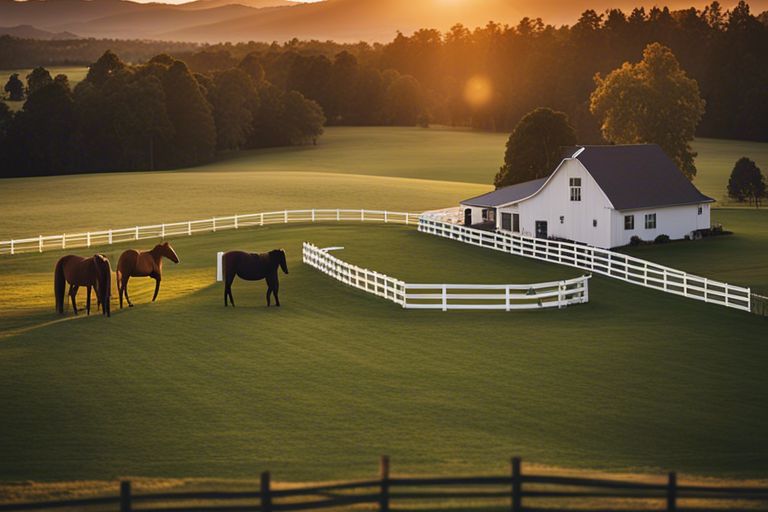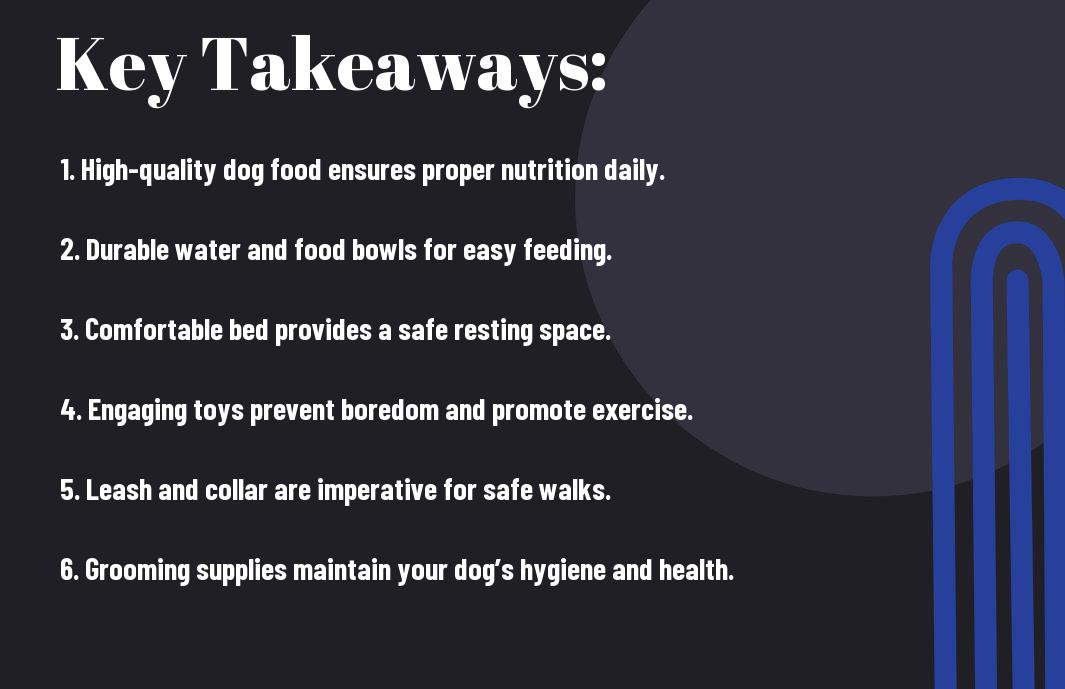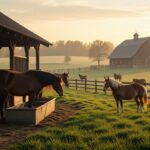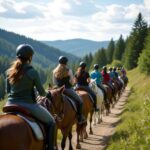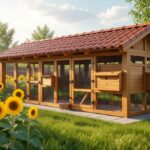Plants and trees play a crucial role in creating a healthy and sustainable environment for your beloved horses. By carefully selecting the right vegetation for your horse property, you can provide shade, shelter, and even nutritional benefits for your equine companions. In this guide, we will explore some of the best plants and trees that are not only beautiful but also safe and beneficial for your horse property.


Benefits of Planting on Horse Properties
Before delving into the specific plants and trees ideal for your horse property, it’s important to understand the numerous benefits that come with planting greenery on your land. From improved air quality to enhanced aesthetic value, introducing vegetation can greatly enhance the overall environment for both you and your horses.
Improved Air Quality
Planting trees and other vegetation on your horse property can significantly improve air quality. Plants absorb carbon dioxide and release oxygen through photosynthesis, reducing the amount of pollutants in the air. These green additions can help create a healthier atmosphere for you, your horses, and other animals on the property.
Soil Erosion Prevention
With the installation of plants and trees, you can also prevent soil erosion on your horse property. The roots of plants help hold the soil in place, reducing the risk of erosion caused by wind or water. This is especially important in areas where the ground is vulnerable to runoff and degradation.
Erosion can lead to the loss of valuable topsoil, which is vital for plant growth and sustainability. By planting deep-rooted vegetation, you can stabilize the soil and protect it from being washed away during heavy rains or strong winds.
Enhanced Aesthetic Value
For those looking to enhance the visual appeal of their horse property, planting trees, shrubs, and flowers can enhance the aesthetic value of the land. A well-landscaped property not only looks beautiful but also creates a more inviting and calming environment for both you and your horses.
Soil that is enriched with plant cover also has improved water retention and fertility, leading to healthier vegetation growth and a more vibrant landscape overall. Investing in the aesthetics of your horse property through planting can make a significant difference in its overall appeal and functionality.
Native Plants for Horse Properties
If you are looking to create a sustainable and harmonious environment for your horses, planting native vegetation is the way to go. Native plants are adapted to the local climate and soil conditions, making them low-maintenance and beneficial for both your horses and the surrounding ecosystem.
Grasses and Legumes
Horses thrive on a diet rich in grasses and legumes, so incorporating native varieties into your pastures can provide them with a natural and nutritious source of food. Native grasses like Switchgrass and Little Bluestem are not only **drought-resistant** but also **highly nutritious**, making them ideal for grazing horses. Legumes such as White Clover and Alfalfa can enrich the soil with nitrogen, improving the overall health of your pasture.
Wildflowers and Herbs
For a pop of color and added diversity to your horse property, consider planting native wildflowers and herbs. **Milkweed** and **Butterfly Weed** not only attract pollinators but also add beauty to your landscape. Herbs like **Chamomile** and **Echinacea** can provide medicinal benefits for your horses, supporting their immune system and overall well-being.
Plus, native wildflowers and herbs can help create a **pollinator-friendly** environment, supporting bees, butterflies, and other beneficial insects that play a crucial role in pollination and ecosystem health.
Shrubs and Trees
To provide shade, shelter, and **windbreak** for your horses, incorporating native shrubs and trees into your property is important. **Eastern Red Cedar** and **Serviceberry** are excellent choices for creating natural windbreaks, protecting your horses from harsh weather conditions. Trees like **White Oak** and **Sugar Maple** not only provide shade but also contribute to the overall aesthetics of your property.
To further enhance the habitat for wildlife and create a **balanced ecosystem**, planting a variety of native shrubs and trees can attract birds, small mammals, and beneficial insects to your horse property.

Non-Toxic Plants for Horse Grazing
To ensure the safety of your horses while they graze, it is crucial to have a good knowledge of non-toxic plants for their consumption. Options for safe fodder include a variety of grasses such as Bermuda grass, Timothy grass, and Orchard grass. These grasses are not only safe for your horses but also provide vital nutrients for their diet.
Safe Fodder Options
Options for safe fodder also include legumes like alfalfa and clover, which are excellent sources of protein for your horses. Additionally, planting trees such as apple, pear, and mulberry can provide healthy treats for your equine companions.
Toxic Plant Lookalikes to Avoid
Any misidentification of plants can lead to accidental ingestion of toxic vegetation by your horses. Some lookalikes to be aware of include poison hemlock, which can be mistaken for wild carrot, and red maple leaves, which may resemble sugar maple leaves. It’s vital to familiarize yourself with the distinguishing features of these plants to prevent any harmful consequences for your horses.
Lookalikes that can be toxic to horses can often grow in the same areas as safe plants, increasing the risk of ingestion by curious equines. Be vigilant when inspecting your pastures and grazing areas to eliminate any potential hazards.
Planting for Palatability and Nutrition
Fodder planting should not only focus on the safety of the plants but also on their palatability and nutritional value for your horses. Introducing a mix of grasses, legumes, and trees can cater to your horses’ varying dietary needs and taste preferences.
The careful selection of plants based on their palatability and nutritional content can enhance your horses’ grazing experience while ensuring they receive a well-balanced diet. Consider consulting with a local agricultural extension office or equine nutritionist to determine the best planting options for your horse property.

Tree Selection for Horse Properties
Shade Provision and Windbreaks
All horse properties benefit from strategic tree planting to provide shade and windbreaks for your equine companions. When deciding on trees for shade provision, consider species that have broad canopies to offer ample coverage during hot summer days. Additionally, planting trees along the perimeter of your property can help create natural windbreaks to protect your horses from harsh winds.
Fruit and Nut Trees for Horse Treats
Introducing fruit and nut trees to your horse property can offer both nutritional benefits and enriching treats for your horses. Species like apple, pear, and pecan trees not only provide delicious snacks but also encourage foraging behavior that can stimulate your horses’ natural instincts.
With proper management, these trees can become a sustainable source of horse treats while adding aesthetic value to your property.
Drought-Tolerant Tree Species
On horse properties in arid regions, selecting drought-tolerant tree species is imperative to ensure the survival of your trees with minimal water requirements. Species like mesquite, palo verde, and desert willow are drought-tolerant options that can thrive in dry conditions.
The drought-tolerant tree species not only conserve water but also provide valuable shade for your horses in challenging environments.
Planting and Maintenance Considerations
Soil Preparation and Fertilization
With any planting project on your horse property, the most critical step is preparing the soil. Test your soil to determine its pH and nutrient levels, and amend it as needed. Well-draining soil is vital to prevent waterlogging, which can harm plant health. Before planting, ensure the soil is loose and free of debris to promote root growth. Fertilization should be done according to the specific needs of the plants you choose, following the recommendations based on soil test results.
Irrigation and Water Conservation
Planting drought-resistant plants on your horse property can help conserve water and reduce the need for irrigation. However, during dry spells, your plants may still require supplemental watering. Consider installing a drip irrigation system to deliver water directly to the roots, reducing evaporation and water waste. Remember to adjust your irrigation schedule based on the weather and plant needs to promote healthy growth.
Considerations: When planning your irrigation system, factor in the water requirements of your plants, as well as the local climate and rainfall patterns. Investing in water-efficient practices not only benefits your plants but also conserves this precious resource for the future.
Common Challenges and Solutions
Invasive Species Control
Now, an crucial challenge to address on your horse property is invasive species control. Invasive plants can quickly take over an area, outcompeting native species, and reducing biodiversity. To combat this issue, it’s crucial to regularly inspect your property for any invasive species. Your local agricultural extension office can help you identify these plants and recommend effective removal methods. By promptly removing invasive species, you can protect the delicate balance of your ecosystem and promote the growth of beneficial plants.
Dealing with Drought and Extreme Weather
With the unpredictable nature of weather patterns, it’s crucial to be prepared to handle droughts and extreme weather events on your horse property. Installing a proper irrigation system can help ensure your plants receive an adequate amount of water during dry spells. Additionally, selecting drought-resistant plant species can help mitigate the effects of water scarcity. Having a contingency plan in place for extreme weather, such as providing shelter for your horses and plants, is crucial to safeguarding your property.
A balanced approach to managing your plant growth and your horse’s grazing habits is key to maintaining a healthy ecosystem on your property. Rotational grazing, where you divide your pasture into sections and rotate your horses between them, can help prevent overgrazing and allow vegetation to recover. Monitoring your pastures regularly and adjusting your grazing strategy based on your observations will help ensure your plants thrive while still providing ample forage for your horses.
Final Words
So, now that you have learned about the best plants and trees for horse properties, you are equipped with the knowledge to create a safe and healthy environment for your beloved equines. By carefully selecting the right vegetation for your property, you can ensure that your horses have access to nutritious forage, shade, and shelter, while also enhancing the beauty of your landscape.
Remember to consider factors such as toxicity, palatability, and maintenance when choosing plants and trees for your horse property. With careful planning and attention to detail, you can create a harmonious and beneficial environment that both you and your horses will enjoy for years to come.
Q: What are the best plants for horse properties?
A: Some of the best plants for horse properties include pasture grasses like timothy, bermudagrass, and fescue, as well as legumes like clover and alfalfa.
Q: What trees are recommended for horse properties?
A: Trees like oak, maple, and pine are recommended for horse properties as they provide shade, shelter, and aesthetic appeal while being safe for horses.
Q: How can plants and trees benefit horse properties?
A: Plants and trees can benefit horse properties by improving air quality, providing shade and shelter for horses, reducing erosion, and creating a visually pleasing environment.
What are some plants and trees to avoid on horse properties?
A: Plants like buttercups, poison hemlock, and black walnut trees should be avoided on horse properties as they can be toxic to horses if ingested.
How can I ensure the safety of plants and trees on my horse property?
A: To ensure the safety of plants and trees on your horse property, research potential toxic plants, regularly inspect for any signs of illness in horses, and consult with a veterinarian or equine specialist if you suspect plant-related issues.
